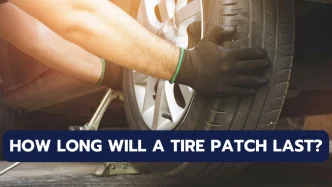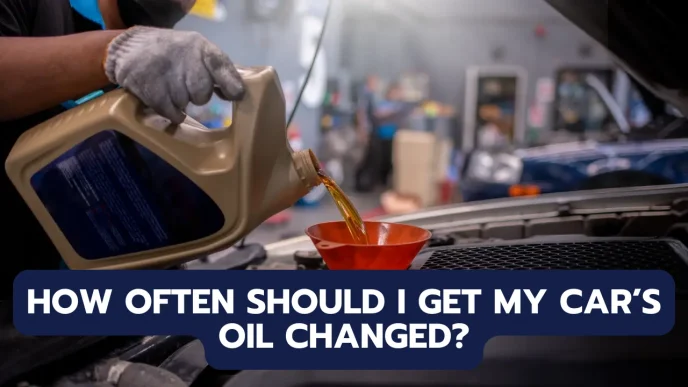When you’ve experienced a punctured tire, getting it fixed promptly and correctly is essential for maintaining safety and performance on the road. Many drivers who’ve had their tires patched or plugged often wonder: How long will this repair last? Is a patch a temporary fix, or can it really serve you for the long haul? The good news is that when done correctly, a tire patch can extend the life of your tire significantly. However, knowing the best repair methods and understanding the limitations of patched tires is key to ensuring your vehicle remains safe.
How Long Will a Proper Tire Patch Last?
A properly installed tire patch or a combination of a patch and plug can last up to 7-10 years, depending on the quality of the repair and the condition of the tire. This estimate reflects the tire’s normal lifespan, meaning a well-patched tire can theoretically serve you until it reaches the end of its tread life. To achieve this durability, it’s essential to have the repair performed by a professional, using the correct techniques and materials.
Patch and Plug: The Gold Standard for Tire Repairs
Modern tire repair methods recommend a combination of a patch and a plug for punctures. This dual approach ensures the best protection against leaks and tire damage. Here’s how the patch and plug process works:
- The Plug: The plug is inserted into the puncture hole to seal it and prevent air from escaping.
- The Patch: The patch is applied to the inner lining of the tire, reinforcing the repair and protecting against pressure leaks.
- Vulcanization: In some cases, the patch and plug are vulcanized, a process that uses heat and chemical agents to bond the patch to the tire permanently.
This comprehensive method ensures the repair is airtight, durable, and capable of withstanding the tire’s typical wear and tear.
Factors That Influence How Long a Tire Patch Will Last
While a tire patch can last for years, several factors can influence its longevity. These factors determine how effective and reliable the repair will be over time:
1. The Quality of the Repair
A tire patch installed by a Certified Repair Shop using the correct procedures and high-quality materials is far more likely to last the full 7-10 years. DIY repairs or quick fixes without professional equipment may not hold up as long, leading to potential leaks or blowouts.
2. The Location of the Puncture
Not all punctures are repairable. A tire can only be patched if the puncture occurs within the tread area (the part of the tire that makes contact with the road). Punctures near the sidewall are often deemed unsafe for repairs because the sidewall flexes and bears a lot of stress during driving. Attempting to patch a sidewall puncture could compromise the tire’s integrity.
3. Size of the Puncture
Most professional guidelines recommend that punctures no larger than 1/4 inch (6mm) in diameter can be safely patched. Larger punctures can weaken the tire too much, making it unsafe to repair. In such cases, a tire replacement is usually the better option.
4. Condition of the Tire
The overall condition of the tire matters when deciding to patch it. If the tire already has significant wear or damage, patching it may not be a reliable solution. Worn-out treads, cracks, or multiple previous repairs mean the tire may no longer be safe to drive on.
5. Driving Conditions and Habits
How you drive and where you drive can affect the lifespan of a patched tire. If you regularly drive on rough roads, encounter debris, or push your vehicle at high speeds, the patch may experience more stress and wear out faster. Gentle driving and maintaining proper tire pressure can help extend the life of your repair.
Why You Shouldn’t Patch a Tire More Than Once
Even though a single patch can last years, it’s important to note that a tire should never be patched more than once. Multiple repairs can weaken the tire structure, reduce the speed rating, and increase the risk of a blowout. The speed rating indicates how fast your tire can safely travel, and repeated repairs compromise this ability, making high-speed driving dangerous.
Safety Risks of Multiple Patches
- Weakened Structural Integrity: Each patch creates a potential weak point in the tire.
- Reduced Load Capacity: The tire may not support its intended weight capacity.
- Increased Blowout Risk: High stress or heat can cause failure in the repaired area.
If your tire has been patched before and suffers another puncture, it’s safer to replace the tire entirely rather than attempt another repair.
Signs That Your Tire Patch May Be Failing
Even a properly installed patch can fail under certain conditions. Here are signs that your patched tire may need immediate attention or replacement:
- Loss of Tire Pressure: If you notice your tire losing air frequently, the patch may be compromised.
- Visible Damage: Any bulges, cracks, or deformations near the patched area could indicate failure.
- Vibration While Driving: Unusual vibrations or thumping noises may suggest a problem with the tire.
- Visible Wear on the Patch: If you can see the patch inside the tire and it appears loose or damaged, the repair may not be holding.
When Should You Replace a Patched Tire?
Sometimes, replacement is the safest option. Consider replacing a patched tire if:
- The tire has multiple punctures or patches.
- The tread depth is below 2/32 of an inch (the legal minimum in most places).
- The puncture is near the sidewall or shoulder of the tire.
- You notice any bulges, cracks, or uneven wear.
- The tire is more than 6 years old, regardless of tread wear.
How long can I drive on a patched tire?
A properly patched tire can last up to 7-10 years or the remainder of its tread life. If the repair was done correctly and the tire is in good condition, you can drive on it safely for thousands of miles.
Is a tire patch a permanent fix?
Yes, when done correctly, a tire patch combined with a plug is considered a permanent repair. The patch seals the inner lining, while the plug fills the puncture hole. This method ensures long-lasting durability.
Can I patch a tire myself?
While DIY patch kits exist, it’s safer to have a professional repair your tire. Certified technicians use specialized tools and techniques to ensure the patch is secure, airtight, and meets safety standards.
How much does it cost to patch a tire?
A professional tire patch typically costs between $20 and $40, depending on the repair shop and location. This cost is far lower than replacing the entire tire, making it an affordable option if the puncture is repairable.
How do I know if my tire can be patched?
Your tire can be patched if the puncture is in the tread area and is no larger than 1/4 inch (6mm) in diameter. Punctures near the sidewall or larger holes usually require tire replacement.
Is it safe to drive at high speeds on a patched tire?
Yes, but only if the patch was done correctly and the tire hasn’t been patched multiple times. Repeated repairs can compromise the tire’s speed rating and safety at high speeds.
What’s the difference between a patch and a plug?
A plug seals the puncture externally, while a patch seals it from the inside. The best repair method combines both a patch and a plug for a durable, airtight seal.
Can a patched tire fail suddenly?
While rare, a patched tire can fail if the repair was not done correctly, if the tire sustains additional damage, or if the patch begins to deteriorate. Regularly check your tire pressure and inspect for signs of damage.
How do I extend the life of a patched tire?
To extend the life of a patched tire, maintain proper tire pressure, avoid rough roads, drive cautiously, and ensure your vehicle’s alignment and suspension are in good condition.













